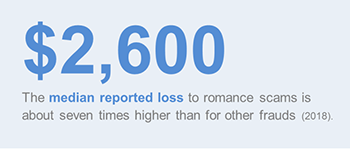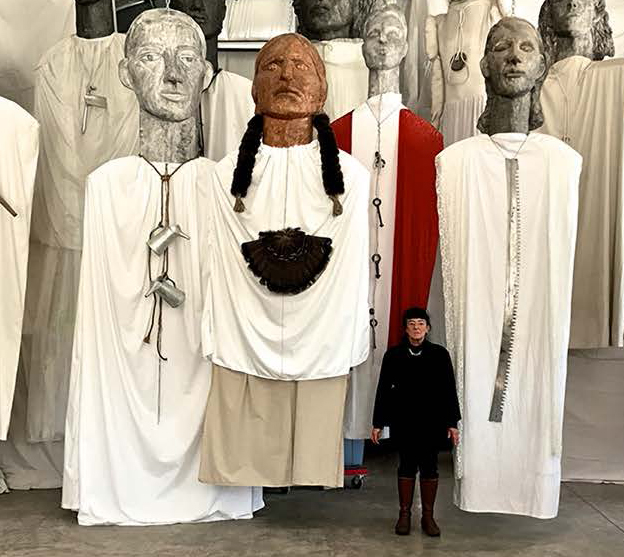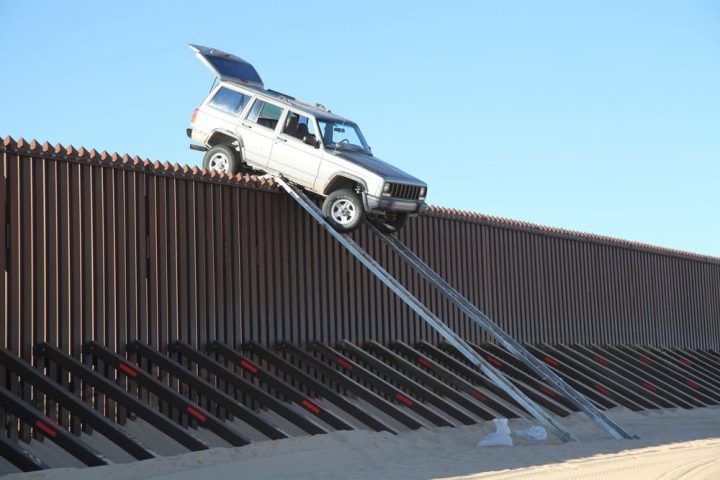Sightings
Jo Freeman: There’s Plenty To Do at the RNC – If You Have the Right Credentials
by Jo Freeman
Every national nominating convention has plenty of auxiliary events, some authorized, some not. Getting space can be a challenge; getting the word out even more so. But they do it nonetheless. Press were given a RNC 2024 Master Event Calendar, which was updated a few days later. Events began on Sunday and ended on Thursday. The actual convention sessions were just one item on the list. The calendar said if an event was Open or Closed to press, and also whom to contact to register. I’m going to describe some of the events, including a couple I went to, and a couple I was turned away from.
Since my focus is on women, I obviously wanted to go to those events – if I could.
The National Federation of Republican Women is the largest grassroots Republican women's organization in the country with hundreds of clubs. Founded in 1938, its members made the phone calls and knocked on the doors that elected Republican candidates for decades. It’s Tuesday luncheon featured Arkansas Governor Sarah Sanders. The Master Calendar said it was SOLD OUT and they wouldn’t let me in. I was able to get into their lounge at the Fiserv Forum Wednesday evening, where I was repeatedly asked if I was a member, and if not, would I join. “I’m press,” I said. “I can’t join anything partisan.” I then said: “What brings you here?” On hearing that, finding anyone willing to chat with me was like pulling teeth.
Moms for Liberty met in a concert hall that afternoon. I had pre-registered, and I got in. From high in a balcony seat I listened to several people talk about the evils of transgenderism. It’s webpage says WE BELIEVE Power Belongs to the People. Sound Familiar? With a focus is on parental rights, it wants to “STOP WOKE indoctrination.”
Tuesday I went to “The New Mavericks” reception co-hosted by the Black Republican Mayors Association and the Georgia Republican Party. They honored Sen. Tim Scott, four Congressmen and two Georgia delegates – all male. There was only one mayor on stage, from Aurora, IL. The chair of the Georgia Republican Party was the one white man on the stage. At that event, women served; they didn’t speak. The RNC reported that 55 delegates to the 2024 convention are Black, up from 18 in 2016.
I missed the Independent Women’s Forum toast to “Women Who Make Our Country Great” because I went to Convention Fest: The Official Delegate Experience, which was held in the streets outside the Fiserve Forum and Baird Hall as well as some space inside Baird. To get to that one you not only needed a credential of some sort, but a USSS pass (which I have).
Concerned Women for America parked its pink bus across from the Baird Center the week before the RNC. No one was home. When Convention Fest opened on Tuesday afternoon, they set up a pink tent, from which its leaders preached to whomever passed by. It calls itself “the nation’s largest public policy women’s organization” but its focus is evangelical Christian. The slogan on the side of its pink bus captures this emphasis: “She Prays, She Votes.” A prayer precedes each sermon.
 US Federal Trade Commission: Romance Scams Rank First On Total Reported Losses
US Federal Trade Commission: Romance Scams Rank First On Total Reported Losses
From the FTC: Romance scammers lure people with phony online profiles, often lifting photos from the web to create attractive and convincing personas. They might make up names or assume the identities of real people. Reports indicate the scammers are active on dating apps, but also on social media sites that aren’t generally used for dating. For example, many people say the scam started with a Facebook message. Once these fraudsters have people by the heartstrings, they say they need money, often for a medical emergency or some other misfortune. They often claim to be in the military and stationed abroad, which explains why they can’t meet in person. more »
 Spirits by Deborah Masters at the Museum of Arts and Sciences in Macon
Spirits by Deborah Masters at the Museum of Arts and Sciences in Macon
Deborah Masters’ Spirits, whose heads measure up to five feet in height, are clothed in white, robe-like garments, and wear talismans signifying their identities. Suspended from the ceiling by chains, they stare out at us impassively, silently dwelling in their own consciousness. The Little Spirits, both human and animal, have a quirky individuality and engaging liveliness. more »
 Memories of Seventies Dublin: As the Decade Moved On, the City Changed and We Were Changing With It; Not All Changes Were Welcome
Memories of Seventies Dublin: As the Decade Moved On, the City Changed and We Were Changing With It; Not All Changes Were Welcome
Jane Shortall writes: A Dubliner, a girl in her twenties, envies me for living in that city through the seventies. She and many of her friends do not snigger at those years described as ‘the decade that style forgot.’ They love how things were back then, citing everything from our apparent carefree life, lots of jobs, not so many crazy rules, many different styles of clothing and, in their words, totally brilliant music. ‘Tell me, what music from today will we be listening to in forty years’ time?’ she asked. Yes, I did see lots of bands in Dublin back then. From Led Zeppelin to Horslips, they came to Dublin and belted out their hits. more »
 Are Border Walls Necessary? What the Research Says About Them
Are Border Walls Necessary? What the Research Says About Them
Here in the US, the Department of Homeland Security (DHS) has erected more than 650 miles of fence and other types of barrier along the almost 2,000-mile US-Mexico border. Even before President Donald Trump took office, federal law required the barrier to be expanded by another almost 50 miles. In December, DHS announced that it had completed most of a $292 million project to build 40 miles of steel wall to replace “an outdated and operationally ineffective barrier” in the San Diego, El Centro and El Paso sectors of the border. Lawmakers have until Feb. 15 to reach a compromise on a new border security plan or there could be another government shutdown. more »






